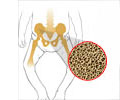Iron in the Earth's Sun is inhibits energy transmission from the center of the sun to near the edge of its radiative band.

Because that role was much greater than formerly surmised, the new, experimentally derived amount of iron's opacity, essentially, its capacity for hindering the transport of radiative energy originating in nuclear fusion reactions deep in the sun's interior, helps close a theoretical gap in the Standard Solar Model, widely used by astrophysicists as a foundation to model the behavior of stars.
Jim Bailey's experimental group, including Taisuke Nagayama, Guillaume Loisel and Greg Rochau, in painstaking experiments spanning a 10-year period, discovered that the widely used astrophysical estimate of the wavelength-dependent opacity of iron should be increased between 30 to 400 percent.
That difference does not represent a large uncertainty but rather how much iron's opacity varies with the wavelength of the radiation.
Iron was important because, of all the elements abundant in the sun, it maintains the highest number of bound electrons essential in radiative energy transfer, and thus has a large effect on the outcome of solar models.
The target design for recent experiments involved intermingled iron and magnesium, tamped by plastic and beryllium layers on both sides. Radiation streaming through the sample heats up the iron and magnesium, which expand. The plastic restrains the expansion to keep it more uniform for opacity measurements. Magnesium provides information about corresponding density and temperature.
Source-ANI
 MEDINDIA
MEDINDIA




 Email
Email







